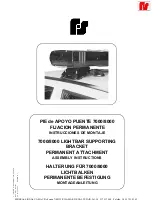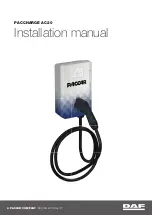
Refer to the “Maintenance Schedule” in Section 8 for the
proper maintenance intervals. More frequent rotation is
permissible if desired. The reasons for any rapid or
unusual wear should be corrected prior to rotation being
performed.
The suggested rotation method is shown in the following
diagram.
TIRE PRESSURE MONITOR SYSTEM (TPMS)
The Tire Pressure Monitor System (TPMS) will warn the
driver of a low tire pressure based on the vehicle recom-
mended cold placard pressure.
The tire pressure will vary with temperature by about
1 psi (6.9 kPa) for every 12°F (6.5°C). This means that
when the outside temperature decreases, the tire pressure
will decrease. Tire pressure should always be set based
on cold inflation tire pressure. This is defined as the tire
pressure after the vehicle has not been driven for at least
three hours, or driven less than 1 mile (1.6 km) after a
three hour period. The cold tire inflation pressure must
not exceed the maximum inflation pressure molded into
the tire sidewall. Refer to the “Tires – General Informa-
tion” in this section for information on how to properly
inflate the vehicle’s tires. The tire pressure will also
increase as the vehicle is driven. This is normal and there
should be no adjustment for this increased pressure.
Tire Rotation
342
STARTING AND OPERATING
Summary of Contents for 2010 Journey
Page 2: ......
Page 5: ...1 INTRODUCTION 5...
Page 8: ......
Page 174: ......
Page 180: ...INSTRUMENT CLUSTER 180 UNDERSTANDING YOUR INSTRUMENT PANEL...
Page 290: ......
Page 332: ...332 STARTING AND OPERATING...
Page 386: ...Jack Engagement Locations 386 WHAT TO DO IN EMERGENCIES...
Page 470: ......
Page 481: ...INDEX 10...
















































